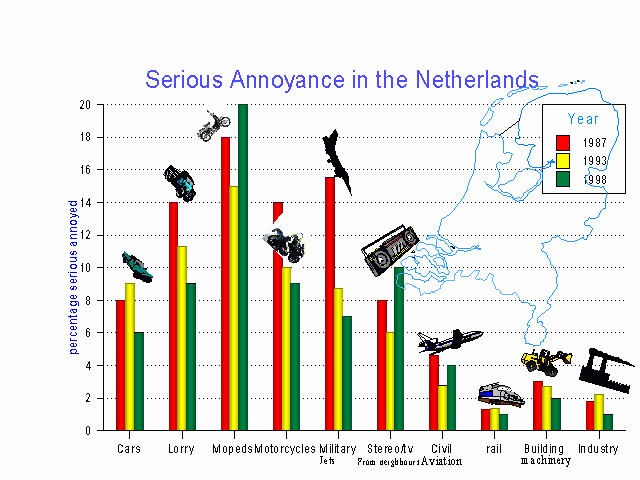 In
summary, the following factors
are at play:
In
summary, the following factors
are at play:
INTRODUCTION
Both the scale and severity of noise annoyance from neighbours is
substantial, and by order of size equates to the annoyance from traffic
noise. Sounds from neighbouring dwellings can be heard in approximately
75% of dwellings in the Netherlands, and in 40% of cases this is a daily
event. In approximately 1/3 (= 2.2 million) of all households at least
some level of annoyance is experienced from these sounds; in approximately
13% (= 850,000 households) to a severe degree.
 In
summary, the following factors
are at play:
In
summary, the following factors
are at play:
sounds are produced and these are connected with occupant behaviour. Usually these are held necessary or desirable in his/her frame of values;
sound insulation between dwellings determine the "dose" that is the sound(level) that penetrates in the "recipients" dwelling;
Recipient attitudes There is a collection of highly diverging auditory and annoyance experiences in the dwelling of the recipient: together these are taken to be the effect. These experiences are connected with such factors as the degree of disruption that occurs and norms applied by the "recipient" himself and what he expects from others (the neighbours). "Transmitters" and "recipients" may vary markedly at an individual level and from person to person (in terms of lifestyle, behaviour, attitude and/or by situation).